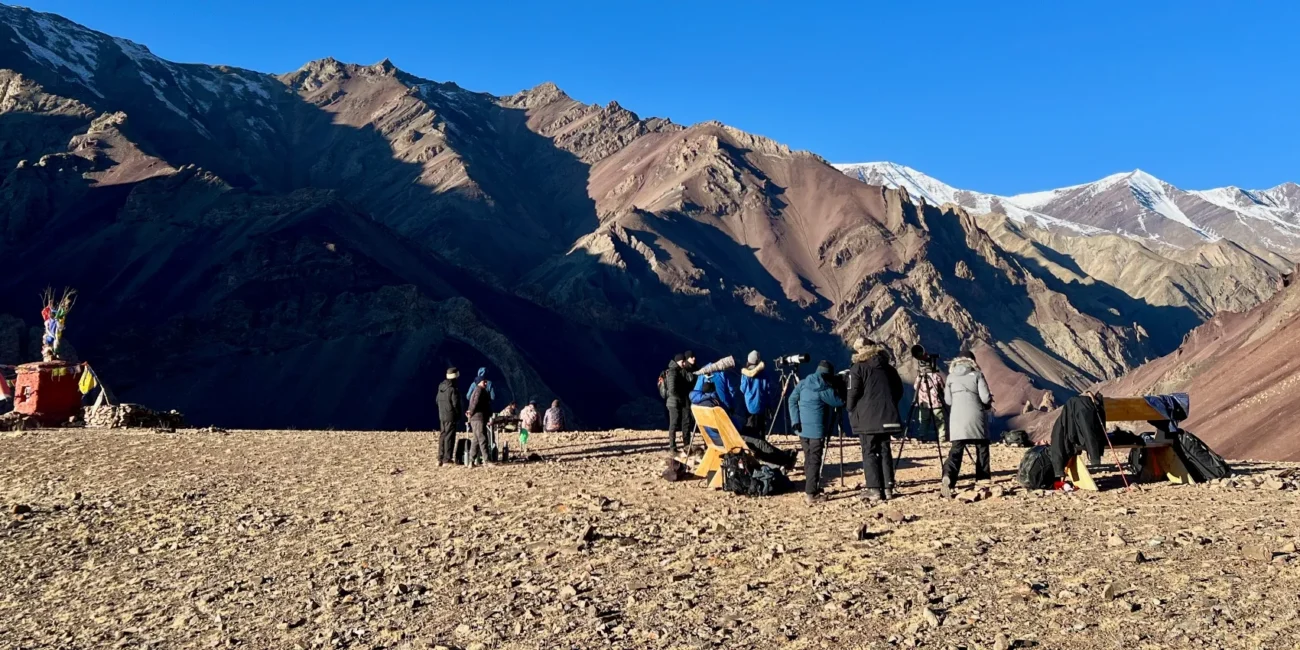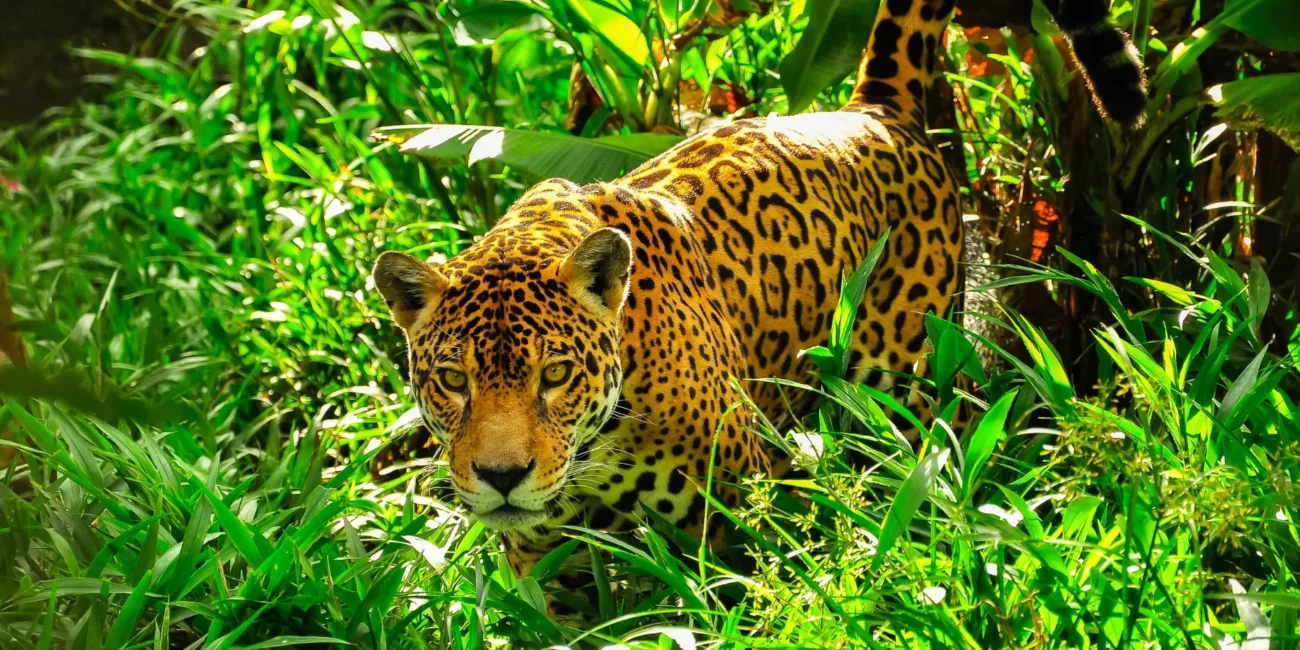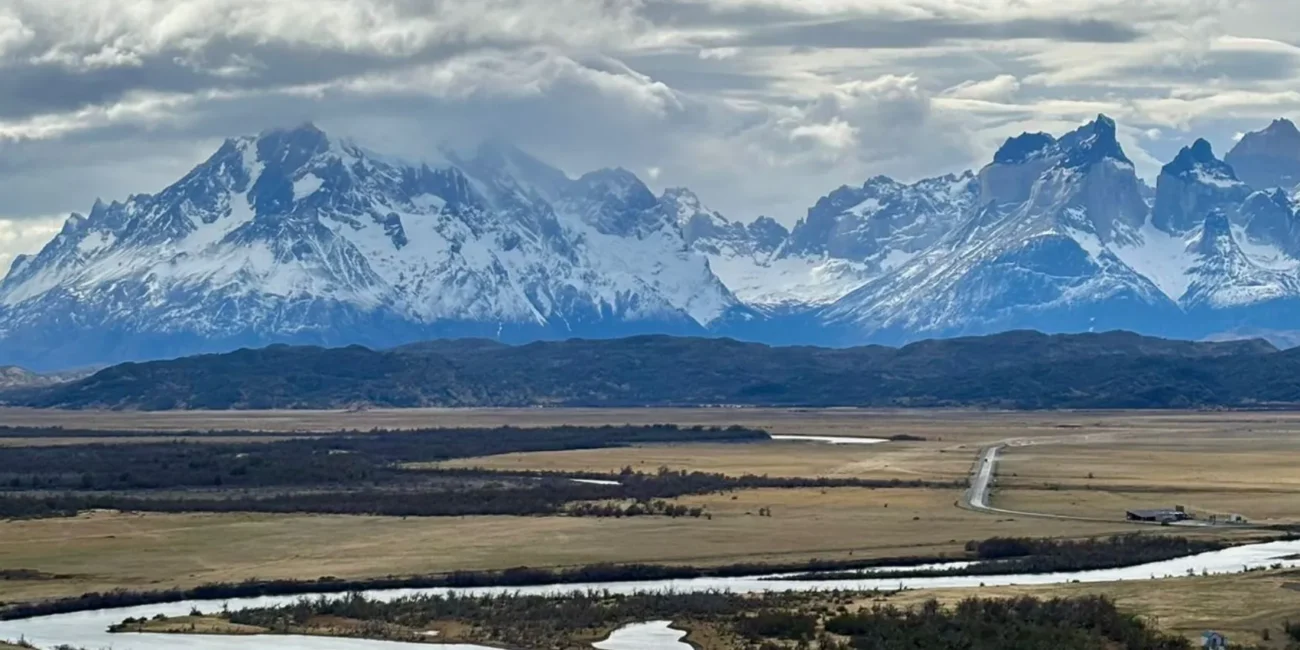To understand Spanish culture, start with the ground beneath your feet.
You feel it first in the thud of feet striking earth in rhythm—at a festival, perhaps, or in a village square. Then, in grape vines braided through terraced hillsides, and in the scent of woodsmoke curling from a hearth blackened by generations.
This guide to Spain begins with the land, etched with heritage, shaped by season and sustained by ritual. This country’s beating heart lives in community, celebration and conservation, all deeply intertwined.
Walk slowly. Listen closely. And you’ll begin to feel its pulse.
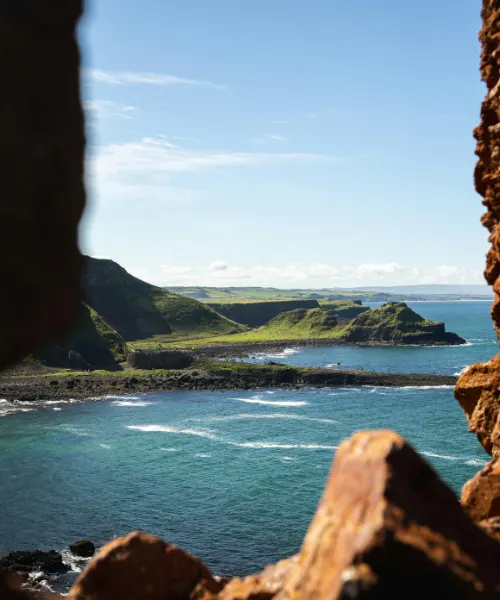
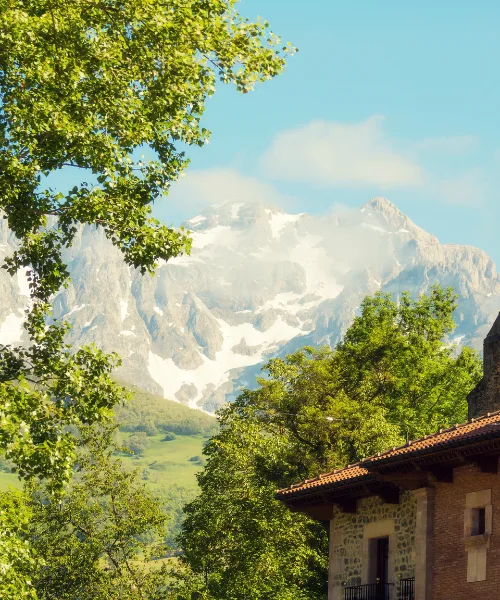
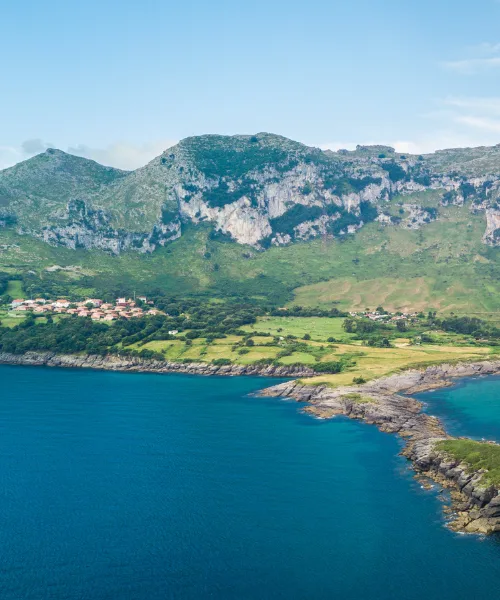
Northern Spain
La Vijanera Festival
Our guide to Spain begins in the mist-laced valleys and forested peaks of the north, where customs follow the time of year and communal spirit outlines daily life.
On the first Sunday of the year, residents of Silió, Cantabria transform into symbolic figures rooted in ancestral lore for La Vijanera, one of Spain’s oldest masquerades. Horns, pelts, headdresses and materials sourced from nature evoke ancient myth, blurring the boundary between humans and the landscape. This theatrical, highly symbolic carnival is ritualistic, not entertainment-driven, warding off evil spirits and invoking fertility.
The evocative Danza del Oso, or Bear Dance, marks the climax of this dramatic Spanish tradition; a performer, dressed as a wild bear, embodies darkness, chaos and the struggle of nature in winter. It leaps and snarls among the crowd, and its ‘killing’ brings the performance to a close—winter and evil are defeated, but Spain’s long festival season has only just begun.
Practices of Tending the Land
Beyond the pageantry, reverence for natural cycles continues in everyday life, woven into how people live, farm and fish across the north.
Each spring and autumn, shepherds move their flocks along ancient routes in a practice known as transhumance. These annual migrations give high mountain meadows time to regenerate and help support biodiversity along Spain’s ecological corridors.
Forests are managed communally through systems like the montes vecinales, where ancestral rights uphold sustainable use. Along Galicia’s Atlantic coast, small fishing guilds like Guimatur, the Association of Sea Women of Cambados, honour tidal cycles, harvesting shellfish by hand with techniques that protect marine life and help coastal economies.
At the heart of the region lies Picos de Europa National Park, an enduring example of conservation and Spanish culture coexisting. Here, rare species like the Cantabrian brown bear share space with traditional pastoralists. As a UNESCO Biosphere Reserve, Picos protects wild landscapes and the ancient knowledge that helps them thrive.
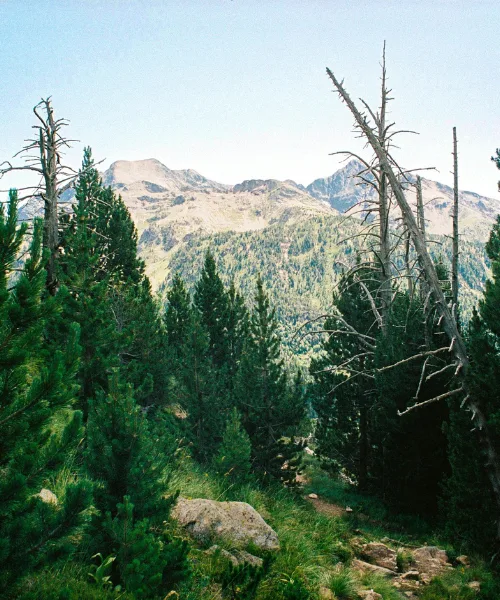
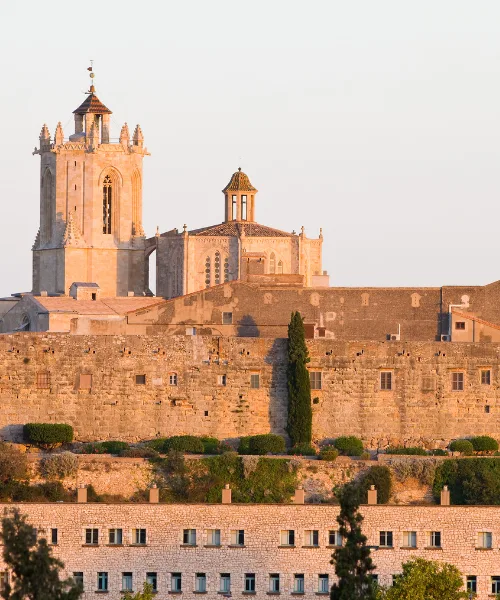
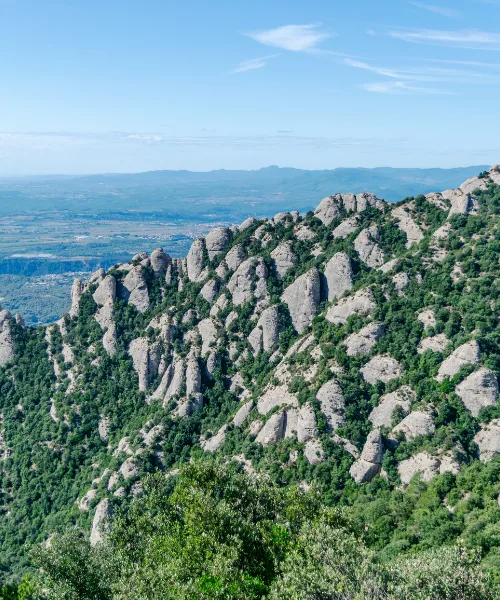
Catalonia
Human Towers and the Montserrat Pilgrimage
In Catalonia, heritage rises from the ground in the form of castells, or human towers. Men, women, and children of all ages stand shoulder to shoulder, layer by layer, up to ten levels high. This deeply rooted tradition takes place at annual festivals and cultural celebrations throughout the region in a moving display of solidarity and social cohesion; UNESCO has recognised it as Intangible Cultural Heritage.
That same spirit of unity takes quieter form on the forested slopes of Montserrat, where pilgrims follow historic trails to a monastery built among jagged peaks. Centuries ago, shepherds discovered the Black Madonna in a mountain cave, and to this day, pilgrims still honour her as Catalonia’s patron saint. It’s a centuries-old custom rooted in reverence for place.
The Montserrat Mountain Nature Reserve protects both natural and cultural wealth, from wild orchids and Bonelli’s eagles to the pilgrimage itself. Here, conservation and tradition are inseparable, and the past lives on in the present.
Living by the Seasons
Centuries before modern sustainability had a name, Catalan farmers cultivated the land in harmony with nature.
Moorish-era acequias still wind through orchards and fields, carrying mountain water along gravity-fed channels. Stewarded for generations, these shared systems are a lifeline in dry summers, supporting crops without depleting rivers or soil. They reflect both ecological wisdom and collective responsibility.
In the highlands, agroforestry practices endure. Nut trees shelter ground crops in terraced plots that mimic natural ecosystems, supporting biodiversity, soil health and food security. It’s farming in tune with the land rather than against it.
Each harvest, communities gather to celebrate. Markets brim with local produce, preserves and handmade crafts, and town squares fill with music and dance during festivals. These ecological, social and economic rituals ensure ancient practices are both remembered and renewed.
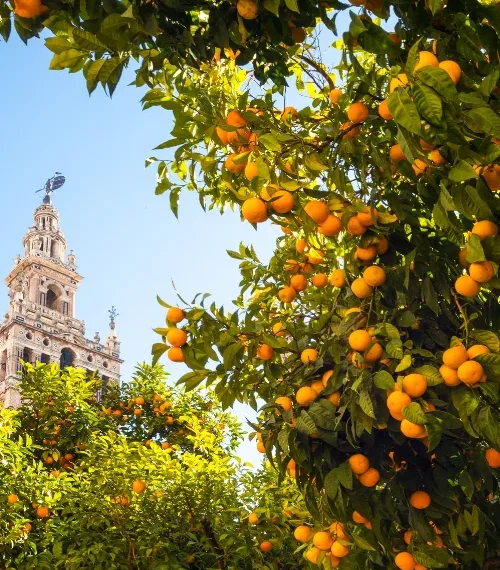
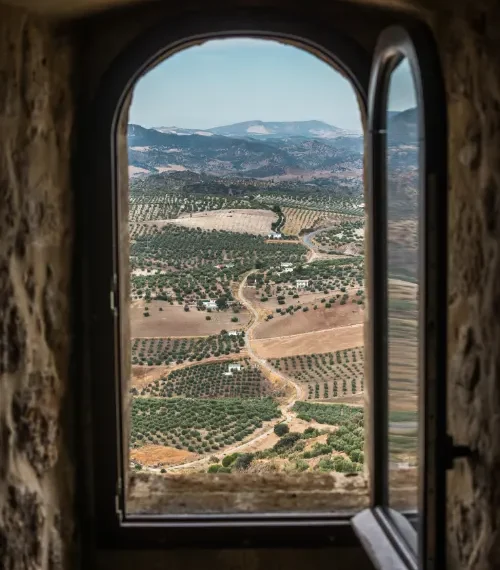

Andalusia
Semana Santa and La Romería del Rocío
Andalusia launches into spring with haunting intensity. Brotherhoods dating back to the Middle Ages wind through the cobbled streets of Seville, Málaga and Córdoba for Semana Santa. Although the processions commemorate the passion, death and resurrection of Christ, the practice endures as a powerful cultural inheritance; many Andalusians belong to at least one brotherhood, whether motivated by faith, family tradition or cultural belonging.
A few weeks later, around a million pilgrims set out on Romería del Rocío on foot, horseback or ox cart. Colourfully decorated wagons and traditional flamenco dress accompany centuries of devotion to the Virgen del Rocío, believed to offer protection and miracles. Andalusian music drifts across Doñana National Park, a UNESCO World Heritage Site and vital wetland reserve, before reaching the whitewashed village of El Rocío in Almonte, Huelva. This sensory gathering affirms the region’s enduring spirit of kinship.
A Working Landscape
Shared responsibility plays out across the Sierra Nevada and Alpujarras through communal irrigation networks dating back to Moorish and Roman times. Local farming communities participate in systems that rely on seasonal rotations and shared agreements, guiding water through carved channels, underground galleries and stone-lined reservoirs. Cooperation ensures access while preserving limited resources.
Agroecology also thrives alongside water stewardship. Mixed planting of olives, figs, almonds, cereals and native shrubs enriches the soil, attracts pollinators and supports wildlife. In Jaén, the world’s largest olive-growing region, cooperatives are now championing circular economy principles, transforming olive waste into bioenergy and utilising new processing techniques to minimise environmental impact.
Farms and habitats coexist in Andalusia’s iconic landscapes. Throughout the wetlands of Doñana and Brazo del Este, rice growers and herders use integrated grazing and time-honoured techniques to maintain healthy pastures. In the dehesa woodlands, livestock graze beneath scattered oaks, which are crucial for biodiversity and carbon storage. These living systems demonstrate how stewardship is everyday practice in the region.
Spanish Culture and Conservation
Spain’s soul doesn’t announce itself. You must travel with purpose to uncover it.
It lives in weathered hands and flows through the rhythms of daily life. It is danced, planted, sung and shared. Across regions, Spanish tradition is practised in real time—enduring, evolving, and rooted in the land.
Some cities carry the weight of their popularity, but we guide travellers to places where community and conservation come first. Travel with care, and Spain will stir the senses and stay with you long after you leave.
Interested in Experiencing Spanish Culture Firsthand?
Journeys With Purpose offers private, conservation-focused adventures in Spain, with tailor-made itineraries built around your passions. We also plan hosted journeys – get in touch with our expert travel specialists today on +44 20 8044 9538 or at connect@journeyswithpurpose.org.

